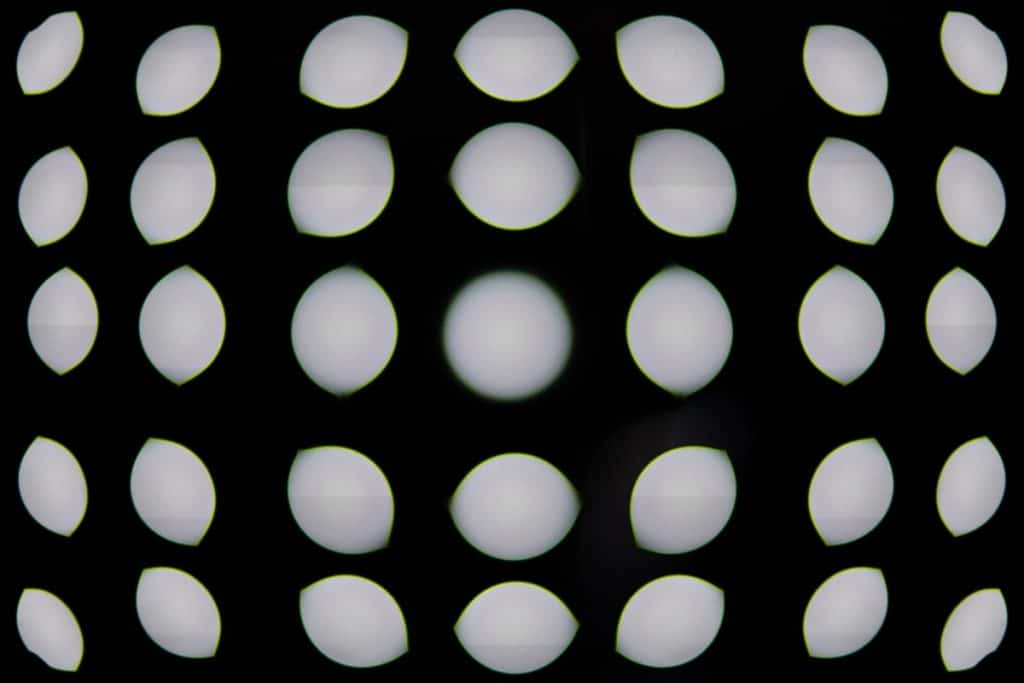I did a brief report on the Mitakon Zhongyi Speedmaster 50 mm f/0.95 lens a while back. I noted that the sensor in the camera I used, the Sony a7RII, couldn’t make use of all the light the lens gathered. In one of the DPR fora, a question arose as to whether or not that affected the out-of-focus (OOF) point spread functions (PSFs) of the lens.
I ran my LED flashlight test this morning:
The PSFs don’t look like evenly illuminated disks at all; they are brighter in the center and taper off near the periphery, like those of an apodized lens. Ignore the small sudden changes in brightness vertically; that’s due to the pulse-width-modulated flashlight.
Very interesting, at least to me. Maybe some optics expert can explain why the microlenses and the lens interact this way. Brandon?

You have to keep in mind that this lens performs best on BSI sensors. There are some strange darker edges of the bokeh balls with older models. Darker with magenta coloration.
The a7RII has a BSI sensor.